
Poliomyelitis, commonly shortened to polio, is an infectious disease caused by the poliovirus. Approximately 70% of cases are asymptomatic; mild symptoms which can occur include sore throat and fever; in a proportion of cases more severe symptoms develop such as headache, neck stiffness, and paresthesia. These symptoms usually pass within one or two weeks. A less common symptom is permanent paralysis, and possible death in extreme cases. Years after recovery, post-polio syndrome may occur, with a slow development of muscle weakness similar to that which the person had during the initial infection.

Polio vaccines are vaccines used to prevent poliomyelitis (polio). Two types are used: an inactivated poliovirus given by injection (IPV) and a weakened poliovirus given by mouth (OPV). The World Health Organization (WHO) recommends all children be fully vaccinated against polio. The two vaccines have eliminated polio from most of the world, and reduced the number of cases reported each year from an estimated 350,000 in 1988 to 33 in 2018.

Coxsackieviruses are a few related enteroviruses that belong to the Picornaviridae family of nonenveloped, linear, positive-sense single-stranded RNA viruses, as well as its genus Enterovirus, which also includes poliovirus and echovirus. Enteroviruses are among the most common and important human pathogens, and ordinarily its members are transmitted by the fecal–oral route. Coxsackieviruses share many characteristics with poliovirus. With control of poliovirus infections in much of the world, more attention has been focused on understanding the nonpolio enteroviruses such as coxsackievirus.
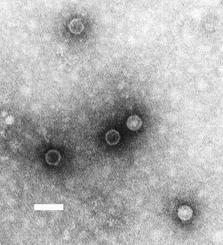
A poliovirus, the causative agent of polio, is a serotype of the species Enterovirus C, in the family of Picornaviridae. There are three poliovirus serotypes: types 1, 2, and 3.
The oral polio vaccine (OPV) AIDS hypothesis is a now-discredited hypothesis that the AIDS pandemic originated from live polio vaccines prepared in chimpanzee tissue cultures, accidentally contaminated with simian immunodeficiency virus and then administered to up to one million Africans between 1957 and 1960 in experimental mass vaccination campaigns.

Albert Bruce Sabin was a Polish-American medical researcher, best known for developing the oral polio vaccine, which has played a key role in nearly eradicating the disease. In 1969–72, he served as the president of the Weizmann Institute of Science in Israel.
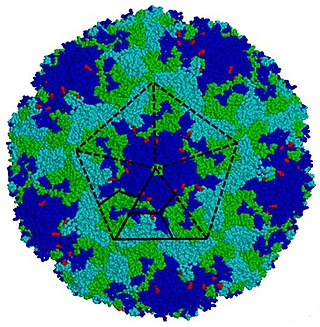
Enterovirus is a genus of positive-sense single-stranded RNA viruses associated with several human and mammalian diseases. Enteroviruses are named by their transmission-route through the intestine.

Polio eradication, the permanent global cessation of circulation by the poliovirus and hence elimination of the poliomyelitis (polio) it causes, is the aim of a multinational public health effort begun in 1988, led by the World Health Organization (WHO), the United Nations Children's Fund (UNICEF) and the Rotary Foundation. These organizations, along with the U.S. Centers for Disease Control and Prevention (CDC) and The Gates Foundation, have spearheaded the campaign through the Global Polio Eradication Initiative (GPEI). Successful eradication of infectious diseases has been achieved twice before, with smallpox in humans and rinderpest in ruminants.
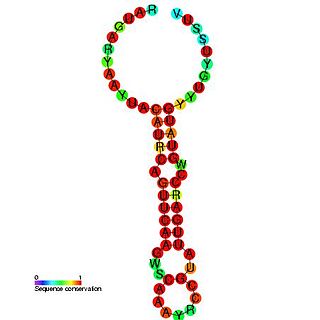
Enterovirus cis-acting replication element is a small RNA hairpin in the coding region of protein 2C as the site in PV1(M) RNA that is used as the primary template for the in vitro uridylylation. The first step in the replication of the plus-stranded poliovirus RNA is the synthesis of a complementary minus strand. This process is initiated by the covalent attachment of uridine monophosphate (UMP) to the terminal protein VPg, yielding VPgpU and VPgpUpU.

Vincent R. Racaniello is a Higgins Professor in the Department of Microbiology and Immunology at Columbia University's College of Physicians and Surgeons. He is a co-author of a textbook on virology, Principles of Virology.

Enterovirus 71 (EV71), also known as Enterovirus A71 (EV-A71), is a virus of the genus Enterovirus in the Picornaviridae family, notable for its role in causing epidemics of severe neurological disease and hand, foot, and mouth disease in children. It was first isolated and characterized from cases of neurological disease in California in 1969. Enterovirus 71 infrequently causes polio-like syndrome permanent paralysis.

Enterovirus E is a picornavirus of the genus Enterovirus. The virus may also be referred to as enteric cytopathic bovine orphan virus (ECBO). It is endemic in cattle populations worldwide, and although normally fairly nonpathogenic, it can cause reproductive, respiratory, or enteric disease – particularly when the animal is concurrently infected with another pathogen.
Eckard Wimmer is a German American virologist, organic chemist and distinguished professor of molecular genetics and microbiology at Stony Brook University. He is best known for his seminal work on the molecular biology of poliovirus and the first chemical synthesis of a viral genome capable of infection and subsequent production of live viruses.
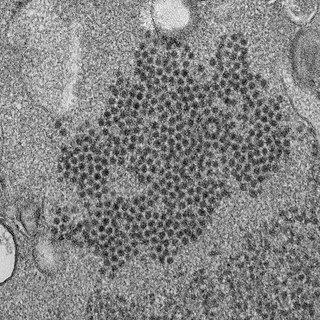
Enterovirus D68 (EV-D68) is a member of the Picornaviridae family, an enterovirus. First isolated in California in 1962 and once considered rare, it has been on a worldwide upswing in the 21st century. It is suspected of causing a polio-like disorder called acute flaccid myelitis (AFM).

Enterovirus D is a species of enterovirus which causes disease in humans. Five subtypes have been identified to date:

In August 2014, enterovirus D68 caused clusters of respiratory disease in the United States. Cases of EV-D68 have occurred in the U.S. for decades, having first been detected in California in 1962. According to the Division of Viral Diseases at the National Center for Immunization and Respiratory Diseases EV-D68 "is one of the most rarely reported serotypes, with only 26 reports throughout the 36-year study period ."
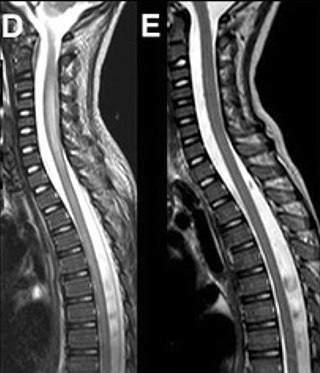
Acute flaccid myelitis (AFM) is a serious condition of the spinal cord. Symptoms include rapid onset of arm or leg weakness and decreased reflexes. Difficulty moving the eyes, speaking, or swallowing may also occur. Occasionally, numbness or pain may be present. Complications can include trouble breathing.
Polioencephalitis is a viral infection of the brain, causing inflammation within the grey matter of the brain stem. The virus has an affinity for neuronal cell bodies and has been found to affect mostly the midbrain, pons, medulla and cerebellum of most infected patients. The infection can reach up through the thalamus and hypothalamus and possibly reach the cerebral hemispheres. The infection is caused by the poliomyelitis virus which is a single-stranded, positive sense RNA virus surrounded by a non-enveloped capsid. Humans are the only known natural hosts of this virus. The disease has been eliminated from the U.S. since the mid-twentieth century, but is still found in certain areas of the world such as Africa.
Herdis von Magnus was a Danish virologist and polio expert. After working with Jonas Salk, she and her husband directed the first polio vaccination program in Denmark. She also researched encephalitis.
The World Health Organization (WHO) created the Global Commission for the Certification of the Eradication of Poliomyelitis in 1995 to independently verify the eradication of wild poliovirus. The GCC certified the worldwide eradication of indigenous wild poliovirus type 2 on 20 September 2015, and wild poliovirus type 3 on 17 October 2019. In addition, five of the six World Health Organization Regions certified their status as free of indigenous transmission of all three serotypes of wild poliovirus :














